User:SONIC123CDMANIA+&K(B&ATSA)/Super Mario (franchise) Rewrite/Super Mario (series)/Super Mario Bros. (sub-series)
WIP
List of games
Main games
| Title | |
|---|---|
| Cover, original release, and system | Synopsis |
| Super Mario Bros. | |
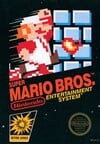 NES |
Super Mario Bros. is the first entry of this series. Mario and his brother, Luigi, have to set out on a massive adventure across the Mushroom Kingdom to rescue Princess Toadstool and the mushroom retainers from the evil King Bowser. After traversing through eight enemy-filled worlds, the brothers eventually reach Bowser's Castle, finally rescuing Toadstool. Super Mario Bros. was the best-selling video game for the NES in 1999[1] and, until being surpassed by Wii Sports in 2009, the best-selling video game of all time. Super Mario Bros. also had a major part in both the takeoff of the NES and the revival of the American video game industry after the crash in 1983. The game earned Mario a permanent position as Nintendo's mascot, and it triggered a massive boom in the video game industry that still continues today. |
| Super Mario Bros.: The Lost Levels | |
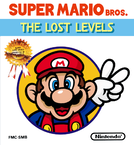 Disk System |
After the success of Super Mario Bros., a sequel was released one year later in Japan for the Family Computer Disk System. It uses a slightly altered version of Super Mario Bros.' engine, with different levels and new features including altered graphics and new enemy behavior, such as Bloopers flying in midair, wind to help the player jump across pits, and other minor changes.
While the game was called Super Mario Bros. 2 in Japanese, Nintendo of America originally deemed this game too challenging and too much like the original to sell well in Western countries.[2] Instead, another game was ported as Super Mario Bros. 2, and the Japanese Super Mario Bros. 2 became known as Super Mario Bros.: The Lost Levels when included in the Super Mario All-Stars remake years later. It saw release in its original form in the West only when released on the Virtual Console in 2007. |
| Super Mario Bros. 2 | |
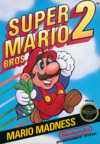 NES |
Owing to the Western branches of Nintendo feeling that the Japanese Super Mario Bros. 2 was too similar to the first game and too difficult for American players, the company instead chose to port the Japanese game Yume Kōjō: Doki Doki Panic and release it as Super Mario Bros. 2 in the company's markets for the NES. New species first appear in this game, including Albatoss and Shy Guys, and it introduces Wart and Birdo. Super Mario Bros. 2 is also the first game to feature four distinctly playable characters, as Mario, Luigi, Princess Toadstool, and Toad have to save the dream world of Subcon from Wart. After fighting their way through seven strange worlds, they eventually save Subcon, and Mario wakes up from his dream.
Despite being a port of a pre-existing Japanese game, the Western Super Mario Bros. 2 would eventually see release in its own right in Japan as Super Mario USA. |
| Super Mario Bros. 3 | |
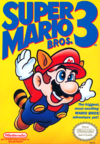 NES |
Another two years had passed by the time the next mainstream, non-port Super Mario game had been released: Super Mario Bros. 3. This was by far the most expansive Super Mario game on the NES, as it featured many levels, items, and enemies and became a huge critical and commercial success. Many of the new species would become staples of the series, including Boos, Fire Piranha Plants and Dry Bones. In the story, Bowser and his seven Koopalings wreak havoc across the Mushroom World after turning all of the kings into various animals. Mario and Luigi have to traverse through many worlds, castles, seas, forests, and deserts to fix the wrongs the Koopalings have caused. Eventually, the brothers reach Bowser and defeat him, rescuing Princess Toadstool once again. |
| Super Mario World | |
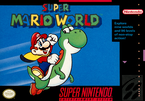 SNES |
Although a direct sequel to Super Mario Bros. 3, Super Mario World had been released on a whole new home console—the Super Nintendo Entertainment System. It was with this game that the Super Mario franchise had been upgraded from 8-bit to 16-bit graphics. Though the games' graphics would later be revolutionized once again, this was indeed a huge step at the time. During the story of Super Mario World, while Mario, Luigi, and Princess Toadstool are vacationing in Dinosaur Land, Bowser and his seven Koopalings once again kidnap the princess. With the help of the Yoshis and Dolphins, the brothers traverse across the vast area of Dinosaur Land. As they make their way to Toadstool, they thwart each Koopaling who stands in their way until they reach Bowser. Once again, Bowser is defeated and Toadstool is rescued. |
| Super Mario Bros. Wonder | |
 October 20, 2023 Nintendo Switch |
Super Mario Bros. Wonder is a side-scroller for the Nintendo Switch. Its plot involves Mario and his allies setting out to save the Flower Kingdom from Bowser. The game plays similarly to the New Super Mario Bros. sub-series with its four-player mode. The game's central mechanic is Wonder Effects, which are triggered by collecting Wonder Flowers. Collecting them in different levels causes various different effects. It also introduces three new power-ups: the Elephant Fruit, Bubble Flower, and Drill Mushroom, which transform characters into their Elephant forms, Bubble forms, and Drill forms, respectively. This is also the first game to feature Kevin Afghani succeeding Charles Martinet in voicing Mario and Luigi. |
Related games
These original games are related to the Super Mario series while not being considered part of it by official Nintendo websites. Many of them feature the adventures of characters other than Mario, sometimes leading into their own series. Notably, Shigeru Miyamoto stated that he considered Super Mario World 2: Yoshi's Island to be part of the core Super Mario franchise in an interview published in 2012.[3]
| Title | |
|---|---|
| Cover, original release, and system | Synopsis |
| Super Mario Bros. Special | |
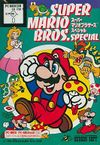 NEC PC-8801, Sharp X1 |
Super Mario Bros. Special is a game made by Hudson Soft and licensed by Nintendo for the NEC PC-8801 and Sharp X1 series of Japanese PCs, and later released in South Korea for the Samsung SPC-1500 in 1987. Super Mario Bros. Special is the second sequel to Super Mario Bros., released a few months after Super Mario Bros.: The Lost Levels in 1986. While superficially very similar to the original Super Mario Bros., the game features original levels but scrolls screen-by-screen rather than smoothly. Jumping and running physics also differ from the original, providing a more challenging experience than Super Mario Bros. Due to the computers' technology being slightly inferior to that of the NES/Famicom, the graphics and audio differ from the original NES game as well, with the X1 utilising more colors and smoother scrolling than the PC-88, and does not include Luigi or a multiplayer mode. |
| Yume Kōjō: Doki Doki Panic | |
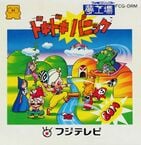 Family Computer Disk System |
Yume Kōjō: Doki Doki Panic started development as a vertically scrolling Super Mario Bros.-style game, eventually gaining horizontal scrolling as well to be more similar. Due to a licensing agreement with Fuji Television, it starred a family of Arabian characters owned by the network. This game would go on to become the western Super Mario Bros. 2, with the Arabian characters replaced with Mario and friends, though other characters (namely enemies and bosses) remained; many would become recurring to the series. |
| Super Mario World 2: Yoshi's Island | |
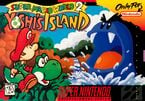 SNES |
While the title suggests it being a sequel to Super Mario World, Super Mario World 2: Yoshi's Island is in fact the prequel not only to the Super Mario series but the chronological first game of the whole Super Mario franchise. The game starts off on the day the Mario Bros. were born and are to be delivered to their parents by a dedicated stork. Foretelling the threat they will represent to the Koopa clan in the future, Kamek tries to kidnap the babies from the stork but only manages to snatch one baby (Baby Luigi) and imprisons the stork as well. The other baby (Baby Mario) falls on Yoshi's Island where he is picked by the Yoshis that reside in there. The Yoshis come to the decision to aid the baby to rescue his brother and the stork from the Koopa clan led by the young Baby Bowser. |
| Super Mario Bros. 35 | |
 October 1, 2020 Nintendo Switch |
Super Mario Bros. 35 was a side-scrolling, battle royale platform game where 35 players competed against each other until one player remained standing. |
Ports, remakes, and compilations
| Title | |
|---|---|
| Cover, original release, and system | Synopsis |
| VS. Super Mario Bros. | |
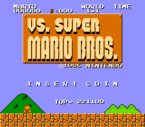 VS. System |
VS. Super Mario Bros. is a two-player arcade game released in North America in 1986. The game is mostly the same as the original Super Mario Bros.; Mario or Luigi went on a quest to save the princess from Bowser and restore order to the Mushroom Kingdom. The game is made harder than Super Mario Bros. in that it had fewer warp zones and more enemies, along with options for the arcade owner to make it more difficult still and thus restrict the time an average player got for their money. The game replaced "duplicate" levels from the original with levels which would later be used in the Japanese Super Mario Bros.: The Lost Levels. |
| Super Mario Bros. (Game & Watch) | |
 Game & Watch |
In 1986, one year after the release of Nintendo's first biggest commercial success, the company released a simplified version of the game on their Game & Watch system. It essentially has the same plot, reduced down to only eight levels; however, after beating every level, they will have to be repeated. Mario will have to go through nine loops, avoiding Lakitus and Bullet Bills, each time with the levels increasing in difficulty. There are also two types of levels: scroll screen levels, in which Mario will have to reach a certain point to advance, and timer screen levels, in which Mario must get through the world in a given amount of time. Additionally, another difference between the original and this remake is that Mario will find Princess Toadstool at the end of every level, without having to fight a boss. |
| All Night Nippon: Super Mario Bros. | |
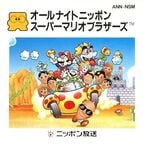 Disk System |
All Night Nippon: Super Mario Bros. is an officially licensed hack of Super Mario Bros.: The Lost Levels. Gameplay is the same, but many characters such as the mushroom retainers are replaced with Japanese celebrities from the radio show All Night Nippon. Other changes are also made for this game, such as World 1 being set during nighttime and Princess Peach's outfit was changed. The game was only released in Japan. |
| Super Mario Bros. (Nelsonic Game Watch) | |
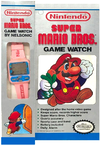 Nelsonic Game Watch |
Super Mario Bros. is a simplified version of the original game released on the Nelsonic Game Watch. The instruction leaflets for these watches contain many spelling errors and inconsistent terminology. Mario has to struggle up a castle to rescue the princess and defeat the Koopa Dragon. |
| Super Mario Bros. 3 (Nelsonic Game Watch) | |
 Nelsonic Game Watch |
Super Mario Bros. 3 is a direct sequel to the previous watch and a tie-in product to the North American release of the original game. It is also known as Super Mario 3 and Super Mario III. This installment contains the Super Leaf, which transforms Mario into long tail Mario. |
| Super Mario World (Nelsonic Game Watch) | |
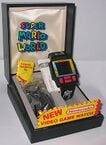 Nelsonic Game Watch |
The Super Mario World game watch is also a tie-in product for the North American release of the original game. This sequel is also known as Super Mario Bros. 4 and Super Mario 4. Mario rides a dinosaur to rescue the princess from Koopa. |
| Super Mario All-Stars | |
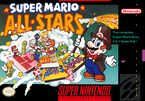 SNES |
Super Mario All-Stars, known as Super Mario Collection in Japan, was released in 1993 also for the Super Nintendo Entertainment System. It is a compilation featuring 16-bit versions of the first four main Super Mario series games: Super Mario Bros., Super Mario Bros. 2, Super Mario Bros. 3 and, in its first release outside of Japan, Super Mario Bros.: The Lost Levels. This game updated the four games' graphics and sound to enhance them, with certain changes to the mechanics. A Wii rerelease, called Super Mario All-Stars Limited Edition, occurred in 2010. |
| Super Mario All-Stars + Super Mario World | |
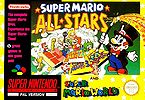 SNES |
Super Mario All-Stars + Super Mario World is an America/Europe-only reissue of Super Mario All-Stars that also includes Super Mario World for the Super Nintendo Entertainment System. |
| BS Super Mario USA | |
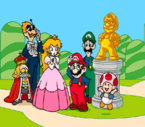 Satellaview |
A follow-up to Super Mario USA (Super Mario Bros. 2), BS Super Mario USA was released as four installments, and each one involved the player heading into each world to collect a gold Mario statue and defeat the bosses until finally reaching and defeating Wart. Each level could be replayed until the clock reached 50 minutes. As the player progressed, St. Giga's Satellite radio would stream an audio drama to tell the story. After the events of Super Mario Bros. 2, the King of Subcon had golden Mario statues put up all around Subcon, to thank him and his friends for their deeds. However, three Birdos, Mouser, Tryclyde, Fryguy and Clawgrip have stolen them, and now Mario must get them back and defeat Wart again. |
| BS Super Mario Collection | |
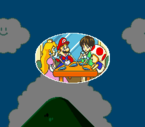 Satellaview |
A remake of Super Mario Collection (Super Mario All-Stars), BS Super Mario Collection is a game for the Super Famicom add-on Satellaview. Like with BS Super Mario USA, as the player progressed through the game, voice acting and music would be streamed to the system using the Satellaview's Soundlink capabilities. |
| Super Mario Bros. Deluxe | |
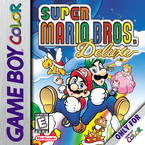 Game Boy Color |
Super Mario Bros. Deluxe is a Game Boy Color remake which includes the first two Super Mario games ever released: Super Mario Bros. and Super Mario Bros.: The Lost Levels (that last under the name of Super Mario Bros. for Super Players). Besides those games, it also featured many other collectibles, including images that could be printed with the Game Boy Printer, Cable Link interface multi-player, records sharing by infrared connection, a calendar, a fortune teller, etc. Unlike other remakes, it was not developed by Nintendo EAD, but rather by Nintendo R&D2. |
| Super Mario Advance | |
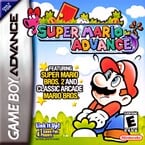 Game Boy Advance |
Super Mario Advance is a remake of Super Mario Bros. 2 made for the handheld game system, the Game Boy Advance, and released in 2001. Like the Super Mario All-Stars remake, Super Mario Advance had updated graphics, alongside various gameplay additions and improvements such as a points scoring system and collectable Ace Coins. Additionally, Mario Bros. is included with the game. It spawned a series of similar remakes, all featuring Mario Bros. as well. |
| Super Mario World: Super Mario Advance 2 | |
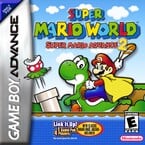 Game Boy Advance |
Super Mario World: Super Mario Advance 2 is a remake of Super Mario World made for the Game Boy Advance. It is the second title in the Super Mario Advance series and was released in 2002. There are various differences between the original Super Mario World and Super Mario Advance 2 such as Luigi's sprite being changed and made taller than Mario to match his normal appearance. The game was a gigantic hit for Nintendo and the Game Boy Advance, selling 3,290,000 copies in North America and 5,460,000 copies worldwide. |
| Yoshi's Island: Super Mario Advance 3 | |
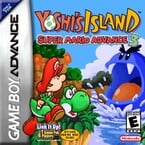 Game Boy Advance |
Yoshi's Island: Super Mario Advance 3 is a remake of Super Mario World 2: Yoshi's Island for the Game Boy Advance. The game features similar visuals to the original game, though due to the lack of the Super FX chip, the game tracks behind some graphical aspects. Super Mario Advance 3 has six new levels and Yoshi's Story voice acting and sound effects. |
| Super Mario Advance 4: Super Mario Bros. 3 | |
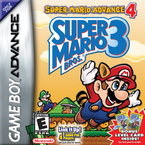 Game Boy Advance |
In 2003, the fourth (and final) Super Mario Advance installment, Super Mario Advance 4: Super Mario Bros. 3, was released for the Game Boy Advance. It boasted similar graphics and sound to the Super Mario All-Stars version of Super Mario Bros. 3, and made use of the e-Reader. A few e-Reader cards came included with new copies of the game, while two sets (referred to as "series") of cards, were released and sold alongside the game. By scanning special cards into the e-Reader, players were able to upload items, videos, and most importantly, new levels into the game. One notable item was the Cape Feather from Super Mario World, which allowed Mario to transform into Caped Mario. There were also two Switch cards that the player could activate (and deactivate) the effects of by scanning them; the Orange Switch and the Blue Green Switch. Scanning these switches triggered small functions in the game. The e-Reader feature is still coded in the European version, but is disabled by default. The Virtual Console and Game Boy Advance - Nintendo Switch Online versions would feature all e-Reader levels and features unlocked by default for all regions. |
| Classic NES Series: Super Mario Bros. | |
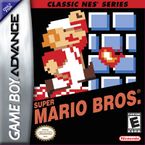 Game Boy Advance |
The original NES version of Super Mario Bros. was released for the Game Boy Advance as part of the Classic NES series of games in commemoration for the 20th anniversary of the release of the original Famicom and NES. It is a direct port, and as a result features no new additions or bugfixes. Consequently, the only significant difference is that the graphics were downscaled to fit the GBA screen resolution. |
| Famicom Mini: Super Mario Bros. 2 | |
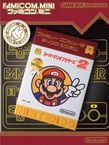 Game Boy Advance |
In Japan, the Classic NES Series were known as Famicom Mini. The original Super Mario Bros. 2 (or Super Mario Bros.: The Lost Levels) was released only in Japan. Much like Super Mario Bros., it didn't feature any new additions, the bugs were left untouched, and the graphics were down-scaled. |
| Super Mario All-Stars Limited Edition | |
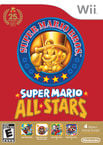 Wii |
Released for the Wii in 2010, Super Mario All-Stars Limited Edition is a port of Super Mario All-Stars that celebrates the 25th anniversary of Mario. |
| Game & Watch: Super Mario Bros. | |
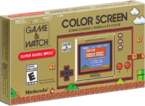 November 13, 2020 |
Unlike the Super Mario Bros. Game & Watch game released in 1987, Game & Watch: Super Mario Bros. is a direct port of Super Mario Bros. and Super Mario Bros.: The Lost Levels fit into a Game & Watch system with full-color screen display. The system also features a Super Mario-themed version of Ball. |
Canceled
| Title | |
|---|---|
| Screenshot and system | Synopsis |
| Super Mario's Wacky Worlds | |
 Philips CD-i |
Super Mario's Wacky Worlds is a canceled Philips CD-i game developed by NovaLogic. It was intended to follow-up on Super Mario World after a Nintendo sales executive suggested that the CD-i could play simple Nintendo games,[4] which is a result of Philips acquiring the rights to several Nintendo characters for use on their platform. The game was to feature a game world mostly based on real-life Earth locations, with themed old and new enemies in the Super Mario World sprite style. Despite NovaLogic impressing Nintendo with their work-in-progress, it was canceled due to poor sales of the CD-i.[4] |
Sub-series
| Sub-series | ||
|---|---|---|
| Artwork | Summary | List of Games |
| Super Mario Land | ||
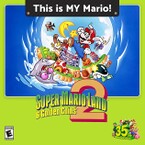
|
| |
| New Super Mario Bros. | ||

|
| |